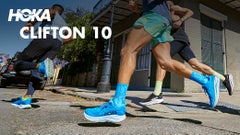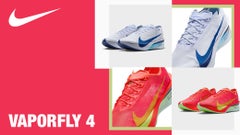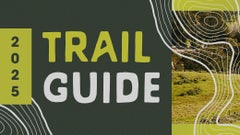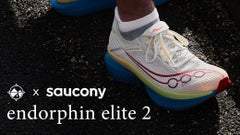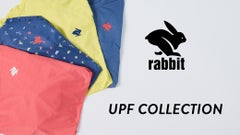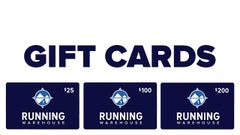Who Should Buy Super Shoes?
February 26, 2025 by Ashley Mateo
With race day tech trickling down into daily trainers, is running in super shoes the best option for everyone?

Super shoes are the sexiest thing that’s happened to running in the past decade. Since the introduction of the Nike Vaporfly 4% in 2017, the men’s and women’s marathon records have dropped by a combined seven minutes and 51 seconds.
Carbon-plated shoes—AKA super shoes—generally feature a tall slab of high-powered foam, a rigid plate that helps control that foam, and an aggressive midsole geometry. The combination of those features creates a bouncier feeling under foot, which can help you run more efficiently. “It’s the magic of that combo that helps some people see a boost in running economy,” explains Matthew Klein, a professor of Physical Therapy at West Coast University Center for Graduate Studies and founder of Doctors of Running.
These shoes were designed for—and tested on—elite athletes. But amateur runners were quick to adopt the technology to boost their own PRs. As research catches up to reality, though, experts warn that not all runners benefit equally from carbon-plated shoes.

Do Carbon Plates Make You Run Faster?
Carbon-plated shoes are designed to make the fastest runners faster on race day. “The people who respond best to a plate right now are elite runners—that’s where the majority of testing is happening,” says Geoffrey Gray, founder of Heeluxe Footwear, an independent shoe research lab. And just to clarify: “A Boston Marathon qualifying time still puts you in the top few percent of all runners in the United States,” he says.
The reason the OG Vaporfly had 4% tacked on to its name was because it was shown to improve running economy—a measure of how efficiently your body uses oxygen—by an average of 4 percent at paces between 5:22 and 6:54 per mile, according to a 2017 study published in Sports Medicine. But the individual results in that study ranged from a 1.59 to 6.26 percent boost.
More recently, a 2023 study published in the same journal found that performance changes vary from a 10 percent drawback to a 14 percent improvement in Adidas super shoes. And slower paces will see less of a benefit. Runners clocking 8:03 miles saw a 1.6 percent boost while 9:40 milers saw just a 0.9 percent increase, on average, research published in 2023 in The International Journal of Sports Physiology and Performance found.
“Saying carbon plates make everyone faster is absolutely not true,” says Klein. “Someone that’s not very very fast, that doesn’t apply the right load in the right direction, isn’t going to get good things out of the shoe. It’s going to be too aggressive, it’s going to waste their money, and it might even increase their injury risk.”
While scientific research is still lagging behind the popularity of carbon-plated shoes, a 2023 opinion article published in Sports Medicine linked the technology to navicular stress fractures; a 2024 research paper published in Footwear Science found super shoes can increase the amount of side-to-side motion of the ankle, which is also linked to navicular stress fractures. “I see these types of articles as the canary in the coal mine,” says Gray. “We now have a small but growing body of research that says, hey, there could be some bad things to running in a plated shoe,” says Gray.
So what does that mean for the average marathoner, who clocks a finish time of 4:32:49, according to a study conducted by Run Repeat? It doesn’t mean you shouldn’t run in carbon-plated shoes. It just means that while it’s fun to watch pros break records in the most high-tech running shoes, these super shoes might not be the best option for you.
Instead, some runners might be better served by a new category of super trainers that skip the plates in favor of advanced foam technology that makes them softer, lighter, and more responsive than daily trainers, but more versatile, durable, and somewhat more affordable than super shoes.

A New Breed of Super Trainers
Over the past few years, some of the elements that make race day super shoes so “super” have trickled down into more accessible models. “In the same way we can take learnings from a Formula 1 car and apply them to a Honda Accord, companies are taking some of what they’ve learned from elite racing shoes and applying that to everyday running shoes,” says Gray.
That’s most obvious in the growing use of PEBA foam, AKA Polyether Block Amide (Pebax is a popular trade name for the material). This material is known for its energy return, and you can find it in foams like Nike ZoomX, Saucony PWRRUN PB, Puma NITRO, and ASICS FF Blast Turbo. Because it’s lighter than traditional foams, shoe companies can also use more of it—in terms of width and height—without adding heft to a shoe.
The ASICS Superblast, which launched in 2022, was one of the first super trainers to rely solely on the combo of two foams—Flytefoam Blast Turbo and Flytefoam Blast+—to create a lightweight, bouncy ride for all types of training. Since then, nearly every brand has debuted their take on the trend, including On’s Cloudmonster Hyper, which features the same Helion HF midsole foam found in their race day shoe; New Balance’s Fresh Foam X Balos v1, the first Fresh Foam to use PEBA; and the budget-friendly Adidas Adizero EVO SL, which uses the same Lightstrike Pro as the race-ready Adios Pro 4.
Some brands are also using supercritical foams, which have undergone a manufacturing process in which the foam is injected with carbon dioxide or nitrogen to make them softer and airier than a standard daily trainer. “These foams aren’t going to be as resilient as a PEBA foam,” says Klein, but they do elevate the experience of a daily trainer, like the HOKA Mach 6 or the Brooks Glycerin 22. This process also allows shoe companies to max out cushioning. The HOKA Skyflow has nearly 40 millimeters of supercritically foamed EVA foam, while the Brooks Glycerin Max uses 45 millimeters of two types of nitrogen-infused foam underfoot and the Puma MAGMAX tops out at 46 millimeters of their nitrogen-infused thermoplastic foam.
From a design perspective, super trainers tend to have a more pronounced rocker (the curvature point in the midsole) than regular running shoes—although it won’t be as dramatic as a racing shoe. Just look at the Adidas Adizero Evo SL compared to the Pro Evo, or the HOKA Mach 6 compared to its inspiration, the Cielo X1.
“Where the curve starts and how aggressive it is is actually different for pro runners than it is for recreational runners,” says Gray. “If the slope is aggressive early, that works really well for fast marathoners who are able to get on the ball of their foot and get that rocker started. When we put a more average runner in it, because their foot is on the ground for longer, their forces can move side to side a lot more, which makes them unstable and can end up propelling them forward less.”
Science shows recreational runners aren’t seeing the same benefits as pros from elite racing shoes, so why not tailor the shoe design to help more runners optimize their experience in it? “Using these [super trainers] as marathon race day shoes would be way more appropriate for the majority of runners,” says Klein.

Super Trainers Aren’t Supposed to Feel Like Race Day Super Shoes
Whatever name a shoe company gives their super foam, they’re not all created equal. Even if, for example, the Nike Alphafly and the Pegasus Plus, a supersized version of one of the brand’s longest-running daily trainers, share the same premier cushioning technology—ZoomX—it’s not going to be the same experience underfoot.
“You have to change the foam—I always call it the cake batter—dramatically when you go thinner or thicker,” says Gray. “One of the biggest differences between elite super shoes and super trainers is that the trainers tend to have a lower energy return. And that’s A-OK, we actually encourage it.”
Here’s why: When you put a foam with really high energy return into a high stack midsole, “it tends to be a little more wobbly, like running on a Swiss ball,” says Gray. When someone’s running fast and their foot isn’t on the ground for long, they don’t have time to be unstable. But for slower runners that aren’t as strong or efficient, “that higher energy return makes the shoes so bouncy and wobbly that it ends up ruining the experience for them,” he explains.
Shoe companies end up tailoring the foam blend to better serve the purpose of the shoe, says Klein (and the process is proprietary, so there’s no way to know what formula they’re using). For example, “the Saucony Triumph 22, which is supposedly a full PWRRUN PB midsole—that’s not the same material as what’s used in the Endorphin Pro,” he says.
But they’re still going to feel better and faster because of those advanced foams. “They’ll provide you with that ‘cushion feeling,’ but they’re not going to be as resilient or bouncy, which is OK because most people aren’t putting adequate force into super shoes to get the full benefit out of them,” says Klein.
It’s a comfort story, really. “We’re already seeing people racing in these because the experience is really comfortable,” says Gray. And comfort is the most important feature when it comes to choosing a running shoe—there’s a link between footwear comfort and improved running economy, according to a 2021 meta-analysis published in the European Journal of Sports Science.
“There actually may be a shoe that’s ‘not as fast’ but might actually be faster for you because it’s going to line up with how you use it,” says Klein. “Just because so-and-so ran a 2-hour marathon doesn’t mean you’re going to get the same experience.” Whether on training or race day, the shoes that make you feel fastest will be the ones that feel best on your feet.




